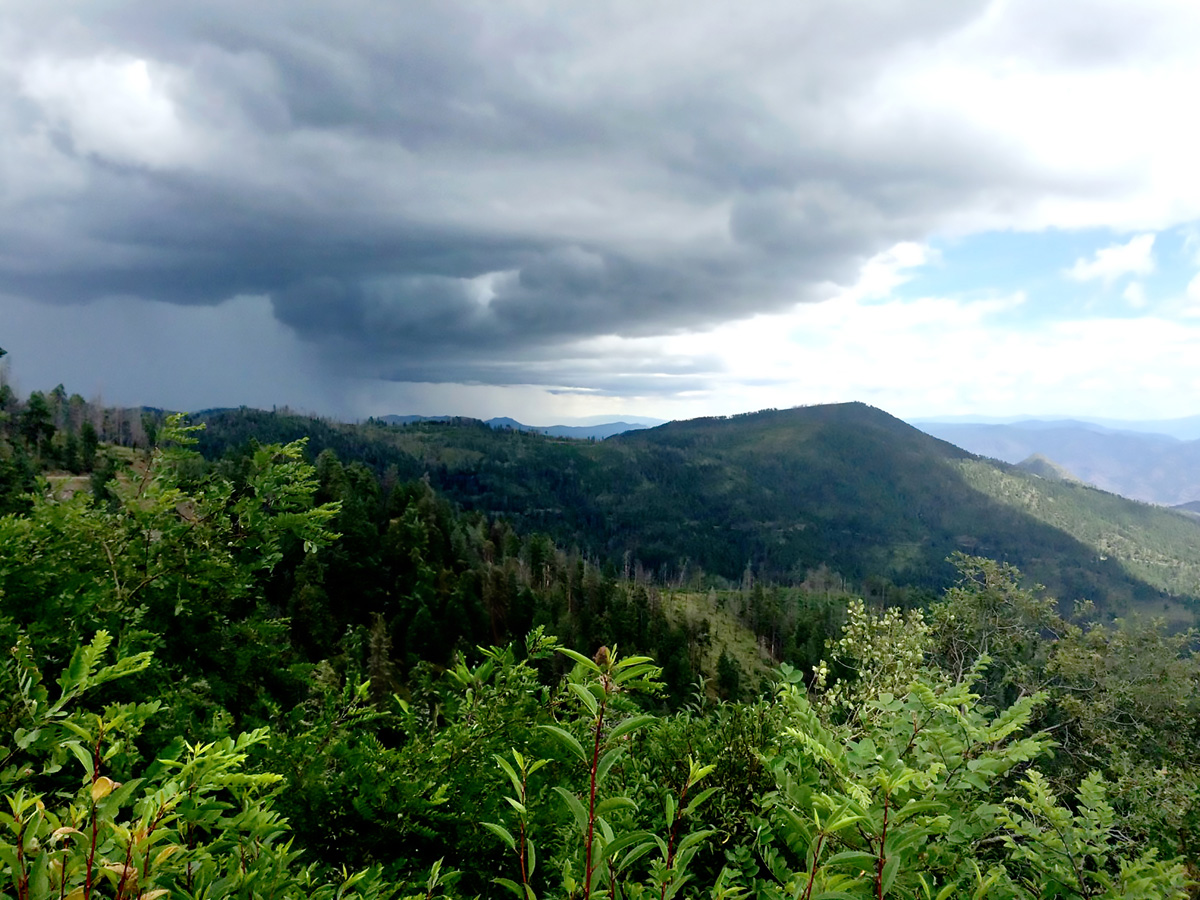The monsoon season for New Mexico and the rest of the southwest is designated as lasting from June 15 to September 30. It is defined as a seasonal change in wind direction. During these summer months, the wind direction changes from a dry westerly direction to a southern direction, drawing up moisture from the Gulf of Mexico and the Pacific Ocean, bringing our summer rains.
Experts at the National Weather Service’s Climate Prediction Center are forecasting below average precipitation across New Mexico, but this doesn’t necessarily mean our state will experience dry conditions all summer. We have already had a fairly moist summer, and heavy rainfall has already occurred in some parts of the state. There is a high probability for hotter, drier conditions as we move into late summer and fall.
Our landscape, livelihood, and well-being come to mind when considering any moisture we are hopefully going to receive. The farmer relies on water and adjusts irrigation and cutting techniques, depending upon rainfall. Rain replenishes our water cycle, and has a certain calming effect on us. Petrichor is the word for that earthy, sweet, pleasant smell after it rains. Many people look forward to that scent that is brought to us when the rains come to our typically arid environment.
Our vegetation is also greatly affected by moisture (or lack thereof) and relies on two forms of precipitation: snow and rain. This in turn has effects on fire behavior. Although monsoons bring rain, they also bring lightning and with lightning comes increased fire potential. The lightning threat really depends on the conditions of the fuels on the ground, i.e., moisture content. Persistent, hot, dry conditions can facilitate fire spread, so rainy and cloudy monsoon weather is desired when considering fire potential.
For example, our native grasses have two growing seasons. The first growing season relies largely on snowmelt, and the second on consistent moisture from the summer monsoon season. If there are long periods without moisture and temperatures are high, grasses “cure” and become ripe for burning. One season’s excess moisture could lead to heavy loads of cured grass the following growing season. These heavy fuel loads could facilitate rapid wildfire spread. Conversely, a below average monsoon season will lead to lower grass abundance the following year, leaving less grass available to burn in the spring.
Although equally dependent on precipitation, our trees are negatively affected by prolonged drought—more so than from the lack of steady moisture. Most have adapted to retain moisture during drought conditions by transpiring less. That is to say that they move less water through their foliage. Trees’ growing season begins in late spring, and the amount of soil moisture is important as the growing season continues. If there is adequate soil moisture, trees will continue to grow and retain high moisture content in their foliage, but if moisture is lacking, tree needles become drier and subsequently more flammable. Any fuel on the ground (aka surface fuel) from small sticks to big downed logs can facilitate fire spread and intensity as well. Fine fuels like grass, twigs, and needles dry or moisten rapidly—from minutes to a few hours—whereas coarse fuels such as big logs require long periods of consistent drying or moistening to adjust, on the order of weeks to months. Low moisture content can greatly increase fire intensity.
At the time of publication, the seasonal outlook from the National Weather Service’s Climate Prediction Center for August and September indicates a high probability of above-average temperatures and below-average precipitation. This could mean ripe conditions for easy fire spread this summer and less fire fuels produced for next year’s potential spring fire season. Time will tell.
Author
-

Experience working with the USDA Forest Service and extensive knowledge of the northern region, while maintaining and fostering strong community relationships remain a big priority.
View all posts



